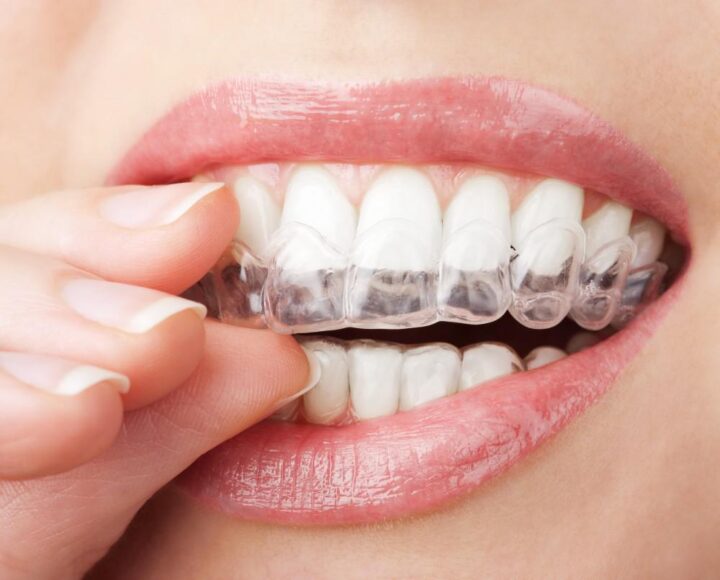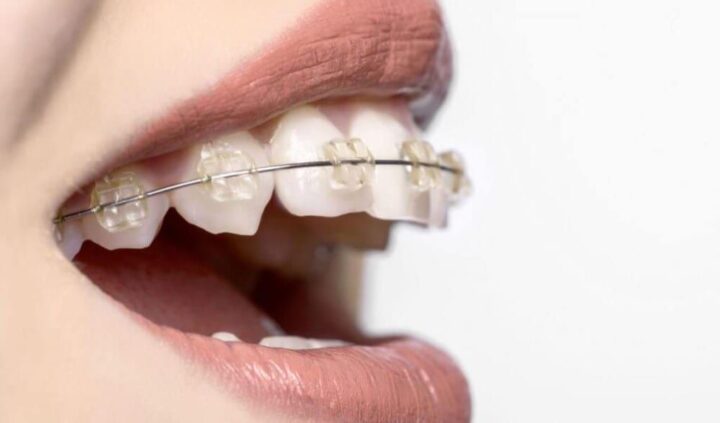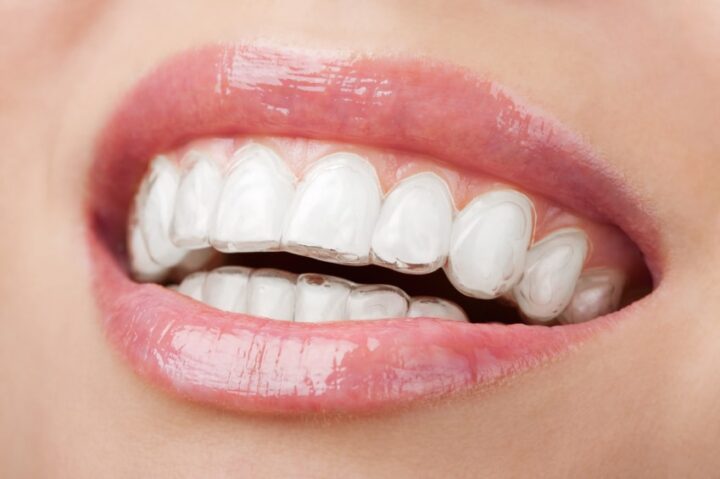Suffering From Uneven Teeth? 4 Ways That You Can Straighten Them

Much like human beings, our teeth are far from perfect. Perhaps you have abnormally small teeth? Or excess teeth? Or misaligned teeth? Rest assured that whichever applies to your mouth, healthy teeth can come in various shapes and sizes. Crooked, twisted, and misaligned teeth are one of the most common dental problems – with many children, teenagers and adults having them.
So, if you’re teeth are uneven, there is no need for you to feel as though you must straighten them. Your teeth are individual to you and can help add character to your smile. However, if the appearance of your teeth affects your self-esteem or mental health negatively, or they’re causing health problems, there are various cosmetic options for you to consider.
From minor orthodontic options such as instant orthotics and aligners to more practical options like braces and surgery, your dentist can use various techniques to straighten your uneven teeth. This article outlines several ways people suffering from misaligned teeth can straighten them – keep reading to find out more.
Clear Aligners

A rapidly growing teeth-straightening solution for those with uneven teeth is clear aligners, which can be worn by teenagers and adults alike. Unlike some of the other forms of orthodontic options on this list, as their name suggests, clear aligners are almost entirely invisible to the naked eye. This means that the user doesn’t have to worry about unsightly teeth-straightening solutions, making this option prevalent across all age groups.
Also called hidden retainers, clear aligners are moulded out of a high-quality transparent plastic that can be custom-made to fit the shape of your mouth. Due to this, they can remain or be removed as the user pleases for eating, drinking, socialising or during special occasions, unlike permanent teeth straightening solutions like braces.
Clear aligners are temporary teeth-straightening solutions which consist of two custom-made trays that rest inside your mouth. As your teeth start to shift, you will need to change to the next set of aligners in the series so that your teeth can continue to change until they reach the desired position, which can take around twelve to twenty-four months.
Back in the day, you would have had to visit a dentist to get clear aligners fitted; however, nowadays, you can find a range of kits that enables you to do this process from the comfort of your own home, such as StraightmyTeeth. To learn more about their innovative teeth straightening solutions for uneven teeth, head to their website or contact them directly to discover how their products could help you today.
Metal Braces

One of the most common options for fixing uneven teeth is using metal braces since they can resolve various issues that stem from having misaligned teeth. Whether you are suffering from overcrowding, underbite, overbite, open bite or spacing issues, metal braces can be an orthodontic option that can resolve all these issues.
Typically, metal braces work by being attached to the front surface of your teeth with bands, flexible wire and brackets. Over time the brackets will slowly put pressure on the front surface of your teeth, coaxing them to move into a corrected position. As this pressure is applied, the shape of your jawline gradually conforms to it, causing the bone underneath your teeth to change shape and form around the newly shifted teeth to lock them into place.
Once the treatment is complete, your dentist will instruct you to wear a retainer for a couple of hours a day to prevent your new smile from migrating. Since teeth will naturally, over time, move back into their original position, regular use of your retainer is essential for supporting the new bone while it forms around your newly corrected teeth.
Usually, they are an option for those with more complex misalignment issues since they are proven to be very efficient; however, they do come with some drawbacks. An evident drawback is the unsightly metal-mouth look, which can cause wearers to develop issues with their self-esteem and mental health.
Another drawback is how expensive they are since one pair can set an individual back around £2,500, but prices can differ between £1,000 to £5,000 in some cases. Yet, despite the drawbacks, the results you can expect to achieve from braces far outweigh the costs and are one of the most rewarding self-investments you can make for yourself and your oral health.
Lingual/Ceramic Braces

Another option for those looking to straighten uneven teeth but who desire a more discreet teeth-straightening solution than traditional braces is lingual or ceramic braces. Although both lingual and ceramic braces both work similarly to traditional braces, through the use of metal brackets, they are still less noticeable.
Ceramic braces are less noticeable than traditional braces due to the brace itself and the archwires connecting it being clear or colour matched to the natural colour of your teeth. In contrast, lingual braces rest on the side of your teeth that face your tongue, making them much more challenging to see than other teeth-straightening solutions.
Despite being a more discreet option for users who want to avoid an unsightly metal-mouth look, those who opt for lingual or ceramic braces can pay a premium for this luxury. On average, those who opt for ceramic braces can expect to pay around £350-£500 more, whereas lingual braces are even more costly and can cost upwards of £6,000.
As well as being costlier than other teeth-straightening solutions on this list, both lingual/ceramic braces have their drawbacks. Ceramic braces are much more delicate than traditional braces, meaning that they can break easily, and due to being tooth-coloured, they can stain easily. On the other hand, lingual braces are a hassle to clean due to their positioning in the mouth, can be hard to get used to, take longer to work and aren’t suitable for those with severely misaligned teeth.
Teeth-Straightening Surgery

Another way that you can straighten uneven teeth is through teeth-straightening surgery, which reaps various advantages/disadvantages. However, this is generally only an option for those with severe misalignment issues that cannot be corrected through less-invasive measures. Health professionals may recommend teeth-straightening surgery if you suffer from a problem caused by malocclusions such as an overbite, underbite or a misaligned jaw.
Depending on the severity of the issues you’re experiencing, your oral surgeon may suggest minor or major surgery to rectify them. Minor surgery involves repositioning the bones and gums that home your teeth. In contrast, major surgery involves realigning your jaw, which will result in your jaw being wired shut for at least four to six weeks following the surgery. In addition to this, major orthodontic surgery has the risk of the following complications:
- Risk of a potential infection.
- Pain, tenderness, bruising and swelling for a few weeks after the surgery.
- Long recovery time.
- Risk of bones not healing properly after the surgery.
Despite being a potentially significant procedure, teeth-straightening surgery is one of the most important investments you can make for yourself. Providing that all goes well, you will receive results almost instantly. The only drawbacks are the possible complications/discomfort you’ll experience after surgery and the price – but the latter will vary depending on your location, the type of surgery you have, and whether you have health insurance.
